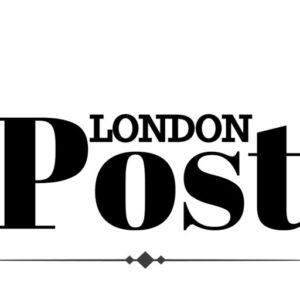Today the Science Museum announced an unprecedented eight-figure donation from the Serum Institute of India, led by CEO Adar Poonawalla. Serum Institute of India is the world’s largest vaccine manufacturer and part of the Cyrus Poonawalla Group. This generous gift, the largest international donation in the museum’s history, will support the ambitious transformation of one of the museum’s most iconic spaces – the Making the Modern World gallery – which is set to re-open in 2028 as Ages of Invention: The Serum Institute Gallery.
Beloved by millions of people who visit each year, the Making the Modern World gallery is now over 20 years old. This significant donation will enable the transformation of this vast space, ensuring the objects and displays in the new gallery reflect current global concerns and scientific thinking. This popular gallery at the heart of the museum will be reimagined by Lawson Ward Studio, the architecture and design studio led by Hannah Lawson and Georgina Ward who were recently appointed as the gallery’s architect.
Sir Ian Blatchford, Director and Chief Executive of the Science Museum Group, said: ‘Through our ambitious new Ages of Invention: The Serum Institute Gallery we will create the most significant display of objects from the history of science anywhere in the world. Visitors will be able to journey through 250 years of innovation and explore the scientific ideas shaping our lives today. Thanks to Mr Poonawalla’s generous support, the architectural expertise of Lawson Ward Studio and the remarkable stories of scientific achievements featured in the new gallery, we will ignite the curiosity of the future scientists and innovators needed to meet the challenges facing the world.’
Mr. Adar Poonawalla, CEO, Serum Institute of India, said: ‘We feel honoured to support the Science Museum’s unwavering commitment in fostering curiosity and discovery. We have always been at the forefront of scientific discoveries and innovation. With this contribution, which will help in bringing in a transformation to this iconic space, we strive to inspire the future generations and celebrate the incredible journey of science that shapes our world.’
Culture Secretary Lisa Nandy said: ‘I thank Mr Poonawalla for this generous donation and indeed all those who support the arts and culture sectors, which bring joy to so many.
‘This is a wonderful demonstration of trust in the Science Museum, which is a powerful advocate for greater cultural and scientific ties between the UK and India. I look forward to seeing this investment support the transformation of this much-loved gallery space and educate and inspire visitors for generations to come.’
Due to open in 2028, Ages of Invention: The Serum Institute Gallery will feature the most significant display of objects from the history of science, technology and engineering anywhere in the world. From the rise of the industrialised world to the emergence of new scientific fields, this dramatic and engaging gallery will invite visitors to explore 250 years of innovation to discover the extraordinary objects, stories and people behind the scientific ideas that changed our lives.
The gallery will tell global stories of human ingenuity, scientific discovery and technological change through a reimagining of the existing Making the Modern World Gallery. Hundreds of exceptional and everyday objects connected to some of the most significant developments in science, technology and engineering will be on display in the gallery, from understanding general relativity and measuring climate change to the growth of mass manufacturing, the creation of synthetic materials and the development of the infrastructure and systems that make modern life possible.
Significant objects set to feature in Ages of Invention: The Serum Institute Gallery include the telescope used by astronomer Caroline Herschel (1795); the world’s oldest surviving steam locomotive, Puffing Billy (1813-1814); J.J. Thomson’s cathode ray tube used in the discovery of the electron (1897); Tucker Sno-cat used in the Commonwealth Trans-Antarctica Expedition (1955), and Tracy, one of the first transgenic sheep (1990-97).
Appointed following a competitive open competition, Lawson Ward Studio will draw on the existing architectural features of the space, utilising natural light, the double height and the largest gallery space in the museum to create an inspiring new gallery for visitors to enjoy. Architects Hannah Lawson and Georgina Ward recently completed the National Gallery Roden Centre for Learning and are currently working with the Courtauld Institute of Art, the Wallace Collection and the Natural History Museum.
Earlier this year, the museum announced two further galleries – Space and Tomorrow: The Bennett Gallery – which will delve into space exploration and the scientific research that will shape our future. Together with Ages of Invention: The Serum Institute Gallery, these three galleries will reimagine the ground floor of the Science Museum, providing almost 3500m2 of free public gallery space for visitors to enjoy. Space opened at the museum in September 2025, with Tomorrow: The Bennett Gallery set to open in early 2027.
Since 2014, more than 60% of the Science Museum’s vast footprint has been renewed thanks to more than £100 million investment secured from sponsors, charitable trusts and foundations and philanthropists. Eleven free new galleries—and two permanent interactive spaces, Wonderlab and Power Up—have opened in that time, which invite visitors to explore diverse topics including medicine, communications technologies, mathematics, the worlds of technicians and engineers as well as the energy transition away from fossil fuels needed to mitigate climate change.








